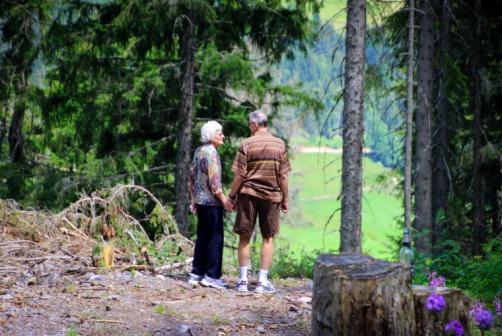- Managing your Practice
-
- Your Benefits
-

Introducing the ultimate Club MD experience
From work to play, and everything in between, we provide you with access to hundreds of deals from recognizable, best-in-class brands, elevating every facet of your life – from practice supports to entertainment, restaurants, electronics, travel, health and wellness, and more. Your Club MD membership ensures that these deals are exclusive to you, eliminating the need to search or negotiate.
Welcome to the ultimate Club MD experience. Your membership, your choices, your journey.
-
- Advocacy & Policy
-
- Collaboration
- News & Events
-

Stay Informed
Stay up to date with important information that impacts the profession and your practice. Doctors of BC provides a range of newsletters that target areas of interest to you.
Subscribe to the President's Letter
Subscribe to Newsletters
-
- About Us
-

The health benefits of green spaces
April 6, 2022
Together for Health
Have you ever spent your lunch break at a nearby park and felt the stress of the day ease away? Or spent time in nature and felt your overall mood improve? If so, then you’ve experienced first-hand one of the many health benefits of green spaces which can positively impact both our mental and physical health.

What is green space?
Green or natural spaces are areas in nature such as parks, conservation areas, rural greenways, trails, forests, and shorelines. Within cities this can also include community gardens, green roofs, and urban greenways.
The importance of accessing green space
During the pandemic’s periods of lockdown and restrictions on indoor activities, outdoor spaces offered a safe and healthy way for individuals to engage in recreational activity. They also increased social cohesion and helped instill a sense of community and togetherness during a time when so many were forced apart.
Health benefits of green space
In addition to the above benefits, accessibility to green spaces has been found to be beneficial to our health in numerous other ways, including:

- increased physical activity
- better immune functioning
- improved cardiovascular and respiratory health
- improved cognitive ability and productivity
- reduced risk for obesity and type 2 diabetes
- lowered levels of stress
- reducing mental health issues and symptoms
In fact, recent studies show that individuals who were exposed to more green space during the pandemic reported significantly less depression and anxiety than those who weren’t, highlighting that even during a time of extraordinary stress, green space had a significant positive effect on people’s mental health.
So whether it’s spending your lunch break at a nearby park or going for a run in the forest, spending more time in green spaces is good for your overall health. Doctors of BC is a big proponent of people spending more time in Beautiful British Columbia, and has developed a new policy resolution that supports efforts to increase access to green spaces for everyone.




